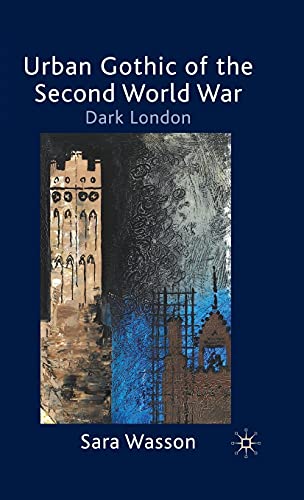
Urban Gothic of the Second World War
by S. Wasson
"Dark London"
Popularity
1.68 / 5
* A book's popularity is determined by how it compares to all other books on this website.
Where to buy?
Buy from Amazon* If you buy this book through the link above, we may receive a small commission at no extra cost to you.
Urban Gothic of the Second World War by S. Wasson
Details
War:
World War II
Perspective:
Civilian
True Story:
Yes
Biography:
No
Region:
Europe
Published Date:
2010
ISBN13:
9780230577534
Description
Brief Summary
Urban Gothic of the Second World War by S. Wasson offers a profound exploration of literary works that diverge from the conventional narratives of wartime Britain. Instead of portraying the British home front as a bastion of unity and perseverance, Wasson delves into writings that highlight the eerie and unsettling aspects of war-time life through the Gothic mode. The book investigates how authors like Elizabeth Bowen, Anna Kavan, Mervyn Peake, and Roy Fuller represent marginal figures and experiences, effectively challenging the dominant cultural mythos of the era.
Main Themes and Topics
Central to Wasson's examination is the theme of the "otherness" and alienation experienced during the Second World War. The text assesses how Gothic elements are employed to depict the psychological landscape of individuals on the periphery of society. By shifting the focus from communal solidarity to individual alienation and fear, Wasson reveals an alternative narrative that underscores the psychological chaos and uncertainty faced by many during this turbulent period. Additionally, the book touches on themes of darkness and marginalization which serve to question the sanitized version of history often presented in mainstream discourse.
Writing Style and Tone
S. Wasson's writing is both scholarly and accessible, making complex literary theories comprehensible to a broader audience. The tone of the book is analytical yet empathetic, as Wasson deftly balances academic rigor with a genuine interest in the human stories lying beneath the surface. The thoroughness of the research is evident throughout, with meticulous attention to detail and a coherent narrative structure that guides the reader through intricate literary landscapes without becoming overwhelming.
Criticism
While Urban Gothic of the Second World War has been praised for its innovative approach and depth of analysis, some readers might find the focus on lesser-known works and authors to detract from the immediate accessibility of the content. The deep academic dive into lesser-celebrated texts and marginal figures might require a more specialized interest in Gothic literature or World War II narratives for full appreciation. However, for those intrigued by the intersection of literary analysis and historical context, Wasson's work is a rewarding read.









